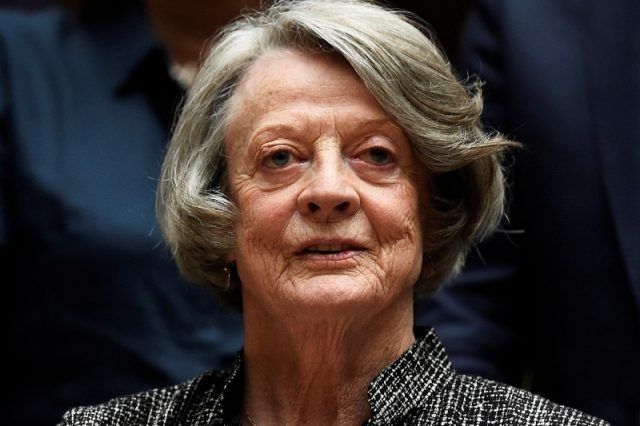
It is a testament to the power of the late British actress Dame Maggie Smith that other eminent actors – though only male ones, as far as I can see – accused her of upstaging them.
Richard Burton complained that in Anthony Asquith’s 1963 film The VIPs, she didn’t merely steal a big scene with him, “she committed grand larceny”. After making the 1978 Neil Simon film California Suite with her (for which Smith won her second Academy Award), Michael Caine is reported to have phoned Michael Palin, who was to be her co-star in the 1982 film The Missionary. “Watch her,” Caine reportedly warned. “She’ll have that scene from under your feet.”
More recent audiences will recognize Smith’s arresting power in her portrayal of Violet Crawley, Dowager Countess of Grantham, in the long-running television series Downton Abbey and its two films. For film critic Peter Bradshaw, even “in the smallest of roles she set her own terms and every other actor was her satellite”.
A prominent part of what gave Smith her power was her caustic humor, an acerbic put-down, and that withering look – from huge eyes set over pursed lips. New York Times critic Frank Rich praised her ability to “italicize a line as prosaic as ‘Have you no marmalade?’ until it sounds like a freshly minted epigram by Coward or Wilde.”
But there was so much more to Maggie Smith than this. Her range was huge, and her power was built on craft.
The social satire and commentary of her performances could be conveyed through anything from minxy humor to world-weariness, but always intelligence. In a review of her portrayal of Ibsen’s Hedda Gabler in a 1970 National Theatre production directed by Ingmar Bergman, the Evening Standard’s Milton Shulman described her as “haunt[ing] the stage like some giant portrait by Modigliani, her alabaster skin stretched tight with hidden anguish”.
So, if you only know her work through recent blockbusters like Downton and the Harry Potter film franchise, in which she played Professor Minerva McGonagall, take a look at her vast and wonderful back catalogue. It’s a sustained masterclass in acting, as well as some of the very best explorations of the lived experiences of British middle-class women in the mid-to late-20th century. Two good places to start are the 1969 film The Prime of Miss Jean Brodie and the 1988 Alan Bennett television play A Bed Among the Lentils.
In The Prime of Miss Jean Brodie – adapted by Jay Presson Allen from Muriel Spark’s 1961 novel– Smith played the eponymous heroine and won her first Academy Award, for best actress. Miss Brodie is a vivacious, romantic teacher at a repressive girls’ school in Edinburgh, Scotland. Confident that she knows what’s best for “her girls”, she fails to recognise how her approach to teaching is as controlling and potentially more damaging than that of the conservative head mistress.
Smith sails through the film, moving from haughty grandeur through charming coquettishness to anguished despair. With just a hint of delicious melodrama, the film captures Miss Brodie’s hubris, but also the strict social limits of the times on girls’ and women’s freedoms and dreams.
A Bed Among the Lentils is one of playwright Alan Bennett’s Talking Heads series of television monologues, written mostly for women. Smith plays Susan, the secretly alcoholic wife of an aspirational vicar. She is clearly under-stimulated by a life spent hosting visiting clerics at lunch and competing with other local women at flower-arranging for the altar. Her life shifts when she meets a kind, young and attractive Asian shopkeeper. He helps her to gain a different perspective on what gods can stand for and discovers what she wants and desires from life.
Smith’s performance under Bennett’s direction is sometimes achingly slow, though it poignantly captures the emptiness of Susan’s life. (Smith reports in the 2018 tribute film Nothing Like a Dame that Laurence Olivier once criticized her for line delivery so slow she “bored him off the stage”. When it came to their next performance, she says, “I went so fast he didn’t know if it was Wednesday or Christmas.”)
Again and again across an extraordinary career, Smith gave us painfully accurate portraits of British women, from steely and haughty to fragile and vulnerable – often simultaneously. She captured women’s fatigue with the social constraints imposed upon them and showed stunning glimpses of a world beyond those limitations, full of other potentials and possibilities.![]()
Jen Harvie, Professor of Contemporary Theatre and Performance, Queen Mary University of London. This article is republished from The Conversation under a Creative Commons license. Read the original article.




